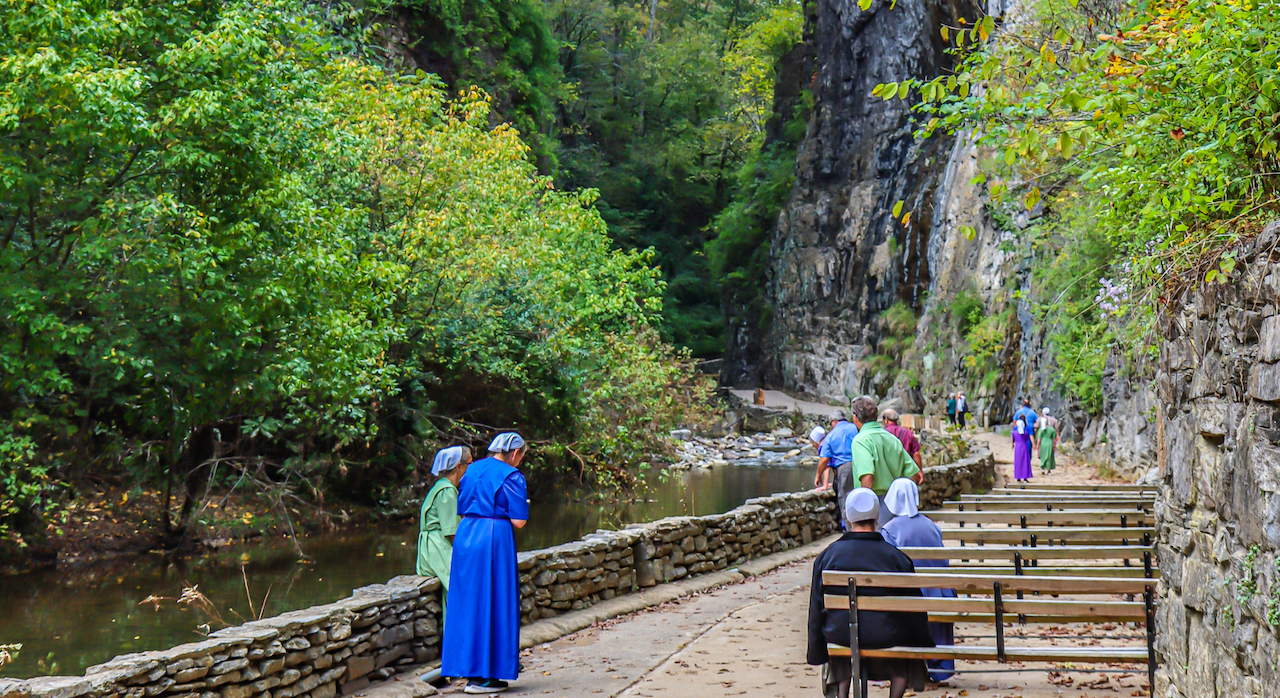My wife, Heather, and I both grew up in the Mennonite community and attended Mennonite churches and schools.
If you met us, you’d see that we live a modern (a.k.a. “mainstream”) Mennonite lifestyle. We both drive cars, have college degrees, and dress according to current fashion.
But still we have a great appreciation for our cultural heritage, and the wide diversity among those people who call themselves Mennonite.
Many people ask questions like, “What do Mennonites believe?” “Where do Mennonites live?” And “Do Mennonites use electricity, or drive cars?” The truth is that Mennonites vary just as widely as any other group of people.
We have conservative Mennonite friends and relatives, as well as those who are business people, doctors, professors, and even a professional baseball player!
We live in Harrisonburg VA, and the Shenandoah Valley is home to many Old Order or “Buggy Mennonites.”
We were delighted recently to watch a baseball game in a corn field and talk with some Old Order Mennonites in Virginia, who kindly shared their stories.
Homesteading– living rurally, tending a garden, making things by hand, and prioritizing time with family– has become trendy in recent years. But living a simple life was a standard Mennonite practice long before social media!
Read on for 30 fascinating facts about Mennonite history and culture, from their beginning in 1520 to present day. We’ll also look at Mennonites vs Amish, examining the similarities and differences in their beliefs and practices.
READ MORE: The 10 Best Things to Do in Harrisonburg VA & Rockingham County

Facts About Mennonite History & Culture Guide
- Facts About Mennonite History
- Differences Between Amish and Mennonites
- Facts About Mennonite Culture
- Famous Mennonites
READ MORE: 30 Fun Facts About Appalachian Scots-Irish History & Culture

Facts About Mennonite History
1. The Anabaptists, including the Amish and Mennonites, originated in the 1520s, during the Protestant Reformation. Early Anabaptists (which means “re-baptizer”) objected to infant baptism and other doctrines of the Roman Catholic Church. They began practicing adult baptism, which led to religious persecution by Roman Catholics and Protestants.
2. Growing up as Mennonites, Martyrs Mirror was second only to the Bible. This book documents Christian Martyrs, highlighting the Anabaptists’ persecution in Switzerland, Germany, and other European countries.
3. In 1693, Mennonite Elder Jacob Ammann began promoting “shunning,” where a person who did something wrong was ignored and separated from their family and church. This doctrine led to a separation in the Mennonite Church: Those who agreed with Ammann became known as the Amish, the most conservative of the Anabaptist churches.
4. William Penn, a Quaker who founded the Province of Pennsylvania in 1681, offered land to Quakers, Amish, and Mennonites. His “Holy Experiment” was to create a colony where people could live together in peace. This promise of religious freedom ultimately led to an influx of Mennonites in Pennsylvania in 1863.
5. Born in Germany, Mennonite Adam Miller is historically recognized as the first white settler in the Shenandoah Valley. He and his wife settled on a claim by the Shenandoah River in 1727. Today you’ll find Mennonite and Amish communities all across the Blue Ridge Mountains, including Union Grove NC, Pikesville TN, and Blue Ridge GA.
6. As Mennonite and Amish immigration to the New World increased in the 1700s, their non-violent beliefs led to persecution for refusing to bear arms during the French & Indian War, American Revolution, and Civil War. There was no accommodation for conscientious objectors, so many Mennonite men were forced into military service.
7. It wasn’t until WWII that national efforts were made to address the pacifist nature of Mennonite religion practitioners. Today, members of peaceful religions can register as conscientious objectors, allowing them to serve in non-combatant roles or perform alternative services in place of military service.
READ MORE: The 10 Best Civil War Battlefields in Virginia to Visit
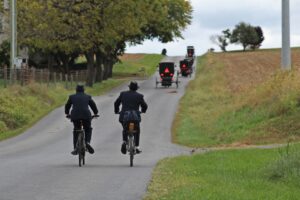
Differences Between Amish and Mennonites
8. Amish people are known for their plain dress and refusal to use modern equipment. They live in closed communities, and rely heavily on the church to direct their lives. While Old Order Mennonites live similarly, they do not practice shunning and have less restrictive views on technology, clothing, education, and transportation.
9. Both Mennonite and Amish communities value modesty, faith-based living, and pacifism. But Mennonites vary more widely, from liberal to very conservative. Some Mennonite communities are indistinguishable from the Amish, while others sport modern clothing and attending academic institutions.
10. Many Old Order Mennonites and Amish people are uncomfortable with having their photos taken, feeling that it is an unacceptable act of pride. They may allow you to photograph their farms, homes, and horse-drawn buggies, but even this can be intrusive. Please ask for permission first and, if they decline, honor their wishes.
11. Sometimes referred to as Amish Mennonites, Old Order Mennonites will use horses for farming and going to town or church. Progressives Mennonites like the ones in our area often gas-powered tractors and equipment for farming, but still use horse-drawn transportation.
12. The Modern Mennonite Church has their own K-12 schools, as well as colleges, seminaries, and universities. Public school is also an option for Modern Mennonites, but Old Order Mennonite children typically attend their own schools. Amish people generally discourage higher education, with their children’s schooling often ending by 8th grade.
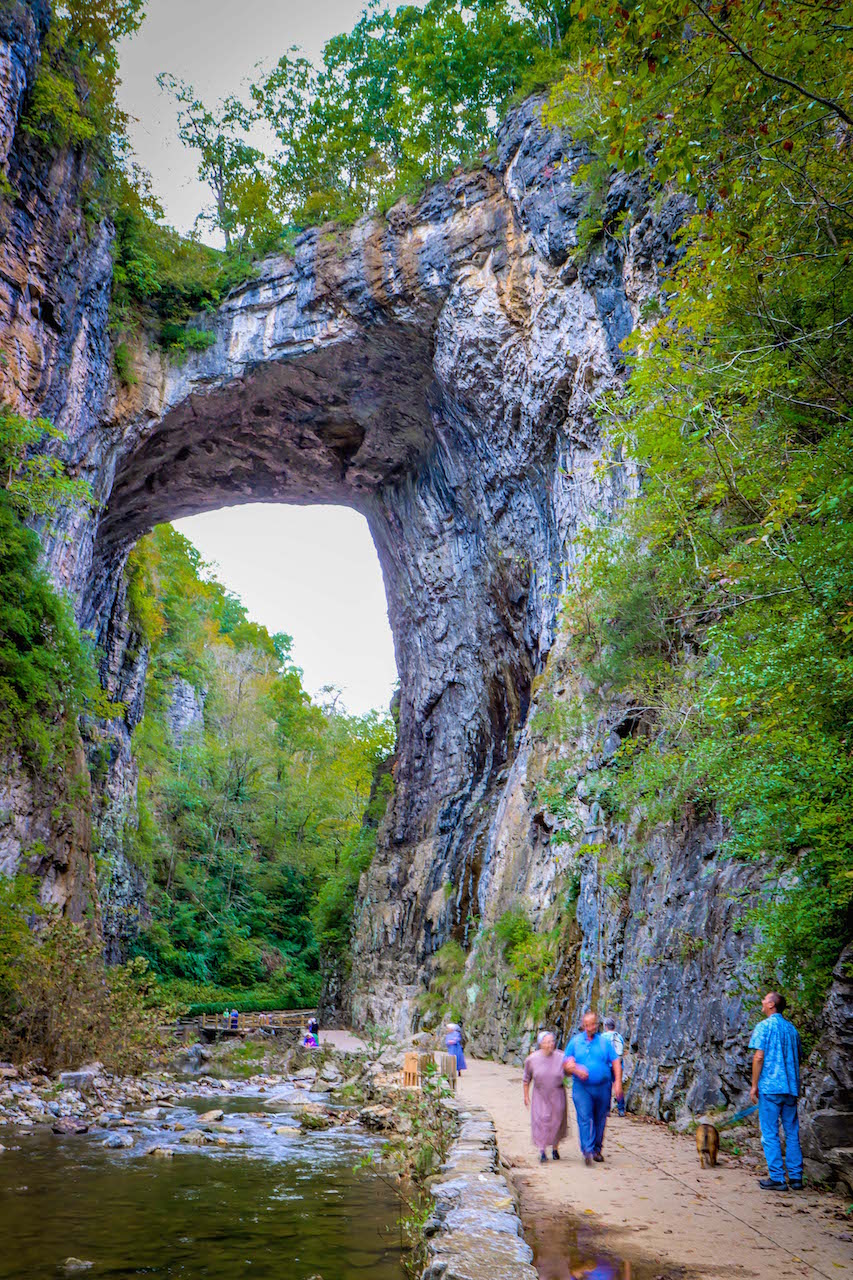
13. Barn raising as a tradition is still practiced among Old Order Mennonites. This tradition exemplifies shared core values of community and Gelassenheit, a German word loosely translated to “yielding to God’s will and others.” The 1985 movie Witness depicts a beautiful (if glamorized Hollywood version) of an Amish barn raising.
14. Mennonites practice many traditional arts and crafts, much like the Amish do. The men in both groups are known for their woodworking skills, carpentry, and furniture making. Both Mennonite and Amish women are famous for their cooking and food preservation methods, as well as quilting and basket making.
15. Eastern Mennonite University in Harrisonburg VA began in 1917 as the Eastern Mennonite School. Mennonite Church leaders wanted to create an educational experience that would differ from secular institutions. Today EMU is a nationally-known liberal arts college, grad school, and seminary with NCAA Division 3 men’s and women’s athletics.
16. Mennonites value serving others as a way of expressing their faith. The church’s emphasis on service has established traditions like the Mennonite Disaster Service, an organization that sends volunteers to repair and rebuild the homes of those who have been impacted by disasters in the USA and Canada.
READ MORE: 50 Fascinating Facts About Cherokee Culture & History

Facts About Mennonite Culture
17. When one Mennonite meets another, they’ll likely play the “Mennonite Game” (our version of “Six Degrees of Separation”). While visiting Old Order Mennonites in Virginia, we played it with a shop owner and his customer. Last names were passed around, relatives in other states were mentioned, and common ground was found in Ohio!
18. Growing up, our families rarely stayed in hotels while traveling. Instead, we had “Mennonite Your Way,” often staying in the homes of Mennonite friends, family, or even acquaintances. Heather’s family hosted many Mennonite travelers at their house in Ohio. A Mennonite Your Way directory was created in the 1970s, and is now available online.
19. Annual Mennonite Relief Sales provide opportunities for friendship, food, and fun while raising millions of dollars to support the Mennonite Central Committee. The Committee works in 45 countries, responding to basic human needs and working for peace. Their October 2023 sale raised more than $380,000 for relief work around the world.
20. When celebrating a marriage or birth, the tradition of quilting is an integral part of Mennonite culture. Highly regarded for their attention to detail, vivid colors, and intricate patterns, Mennonite quilts often demand high prices from eager collectors. At charitable Mennonite Relief Sale auctions, a single quilts can fetch thousands of dollars.
21. Old Order Mennonite buggy colors depend on the church and regional affiliations. The most common colors are black and grey, but they may also be brown, bright yellow, or white. Today’s Mennonite buggies are equipped with safety devices such as lights, turn signals, and a bright orange triangle on the back (since they share the road with cars).
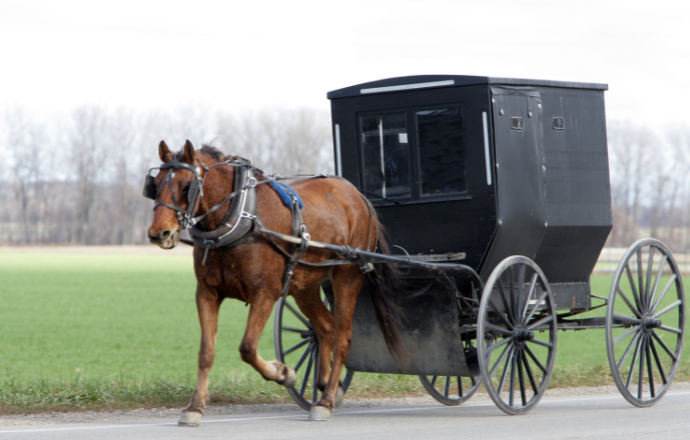
22. Established in 1940, the Civilian Public Service provided work for conscientious objectors to perform in place of military service, including fire prevention, working on dams, and serving in mental hospitals. Mennonite CPS workers had a profound impact on mental health facilities by exposing the inhumane patient treatment that was common at the time.
23. The outside world’s fascination with Old Order Mennonites and Amish culture results in massive tourism revenue for the areas they call home. Lancaster County PA tourism alone generates billions each year! From buggy rides to bus tours, the “plain people” are a big attraction. Unfortunately, this is at odds with their belief in living separately from the world.
24. Joseph Funk, a Mennonite publisher from Virginia, published the Harmonia Sacra in 1832. This shape-note singing songbook was instrumental in the 4-part harmony common to Mennonite music. One of its most well-known songs, “Praise God From Whom All Blessings Flow,” brings joy to Mennonites and non-Mennonites alike.
25. There are myriad Mennonite cookbooks, but the More-With-Less Cookbook is more than just a collection of recipes. Commissioned in 1976 by the Mennonite Central Committee, it was meant to promote less-processed foods and inspire Christians in North Americans to consume less so that others could have more to eat.
26. Mennonite women are known as gifted cooks, food preservers, and bakers. Popular Mennonite favorites include shoo fly pie, whoopie pies, home canned peaches, frozen fresh sweet corn, ham loaf, and various Russian and German dishes.
READ MORE: The Appalachian Culture & History of the Blue Ridge Mountains
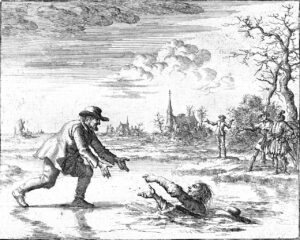
Famous Mennonites in History
27. Menno Simons, a Dutch priest in the early 1500s, left the Roman Catholic Church because he disagreed with the doctrine of transubstantiation (the conversion of bread and wine into Christ’s body and blood). He joined the Anabaptist movement and traveled Europe as a preacher. His leadership ultimately led to Anabaptists being called Mennonites.
28. Hershey PA’s namesake, Milton S. Hershey (the founder of Hershey Chocolate), was born on a farm in Derry Township at the beginning of the Civil War. He grew up Mennonite and spoke the “Pennsylvania Dutch” dialect. Though he wasn’t a practicing Mennonite in adulthood, his work ethic and philanthropy is credited by many to his Anabaptist heritage.
29. Dirk Willems was an Anabaptist man depicted on the cover of Martyrs Mirror. Willems had been imprisoned for his Anabaptist beliefs, but escaped by running across a frozen lake. His pursuer broke through the ice, so Dirk returned and rescued him. Despite his act of kindness, Willems was returned to prison and eventually executed for his beliefs.
30. Former pro baseball catcher Erik Kratz played for 9 MLB clubs, including the Yankees and Pirates. Kratz played baseball at our Alma Mater, Eastern Mennonite University, and was drafted by the Toronto Blue Jays. His occasional end-of-game pitching performances are a must-see YouTube treat! -text/photos by Heather Taylor & Jonathan Weaver unless otherwise noted; lead photo of Mennonites in Natural Bridge VA by Bret Love & Mary Gabbett

